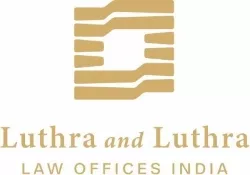- within Corporate/Commercial Law topic(s)
- in India
- with readers working within the Retail & Leisure and Law Firm industries
- within Corporate/Commercial Law topic(s)
- in India
- with readers working within the Retail & Leisure and Law Firm industries
- within Corporate/Commercial Law, Insolvency/Bankruptcy/Re-Structuring and Insurance topic(s)
The Securities and Exchange Board of India ("SEBI") has approved amendments to Securities and Exchange Board of India (Listing Obligations and Disclosure Requirements), 2015 ("2015 Regulations") on March 28, 2025 via the Securities and Exchange Board of India (Listing Obligations and Disclosure Requirements) (Amendment) Regulations, 2025 ("LODR Amendment 2025"), targeting changes to the corporate governance and reporting requirements for listed entities including High Value Debt Listed Entities ("HVDLEs") as provided under regulation 15(1A) of the 2015 Regulations. Key amendments forming part of the LODR Amendment 2025 have been set out below:
Introduction of Chapter VA for HVDLEs:
- The LODR Amendment 2025 has introduced a distinct chapter VA which is explicitly applicable for HVDLEs. The LODR Amendment 2025 increases the applicability threshold from the current amount of ₹500 crore to ₹1,000 crore for the value of the outstanding listed non-convertible debentures ("NCDs"). If an entity with only listed debt crosses the ₹1,000 crore mark during a year, then it must comply with the corporate governance norms within six months of such a trigger, with compliance disclosures permitted from the third quarter post the trigger. This strategic amendment has considerably altered governance requirements, focusing on entities that possess significant listed debt but do not have listed equity. Under the 2015 Regulations, these corporate governance benchmarks were implemented for listed entities primarily based on market capitalization metrics. The LODR Amendment, 2025 has introduced specific corporate governance directives for HVDLEs aiming to shift the regulatory emphasis to entities with substantial debt liabilities instead of the conventional equity listing requirements.
- The applicability of these regulations will continue until the value of the outstanding listed debt securities, as of March 31 in any given year, falls below the defined threshold and remains under that threshold for three consecutive financial years. Prior to the amendment, the specific 'sunset clause' concerning the continued applicability of corporate governance standards were based on the listed debt of the entity.
Amendments relating to the operations and composition of the Board of Directors of a HVDLEs (the "Board"):
- The LODR Amendment 2025 specifies Board requirements for HVDLEs, including a combination of both executive and non-executive directors, with at least one-woman director and a minimum requirement of one-third or half the Board to be independent directors, depending on whether the chairperson is non-executive. Additionally, under regulation 62 D (1) (b) of LODR Amendment 2025, if the non-executive chairperson is a promoter or is related to a promoter or an executive of the company, at least 50% of the Board must be independent directors. Such a composition would encourage independent monitoring and inclusivity in the composition of the Board.
- Furthermore, an age limit of 75 years for a director to be inducted as a part of Board has been introduced which can only be exempted by passing a special resolution. Under the LODR Amendment 2025, the appointment of any director (or manager) by the HVDLE needs to be ratified by the shareholders at the general meeting or within 3 months of such an appointment whichever is earlier. This requirement has been aligned with conditions for equity listing, prior to the amendment.
Maximum Directorships to be held by an individual for HVDLEs:
- Under the newly introduced regulation 62E of LODR Amendments, 2025 the directors need to hold their directorships in accordance with the maximum number as prescribed:
- An individual cannot hold directorships in more than seven listed companies;
- An individual can serve as an independent director in a maximum of seven listed companies; and
- An individual holding the position of a whole time director or managing director in a listed company can serve as an independent director for not more than three listed companies.
Constitution of Committee for HVDLEs:
- The LODR Amendment 2025 requires HVDLEs to create particular committees, such as the nomination and remuneration committee, stakeholder relationship committee, risk management committee, and audit committee. The HVDLEs' internal controls and supervision are strengthened as a result of the modification, which mandates the establishment of specific committees. Prior to the amendment, only equity-listed companies were to constitute these committees under the 2015 Regulations. Additionally, the composition of the committees of the HVDLE has also been specified. The audit committee must have a majority of its directors as independent directors and its chairperson should be an independent director. The nomination and remuneration committee must have two-third of its directors as independent directors and the risk management committee must have directors (at least one independent director) and senior executives of the company as members.
Role of the Audit Committee to approve Related Party Transactions ("RPT")
- The newly introduced post-facto ratification would need the audit committee to approve all the transactions and define the "material modifications" required to be disclosed to the Board. The approval of only the independent directors of the audit committee is required. It is to be noted that such omnibus approvals will hold valid for a period not exceeding one year. Additionally, any such material RPTs would require a mandatory prior No-Objection Certificate ("NoC") from the debenture holders/trustees, holding more than 50% of the outstanding debentures, and the need to be passed through a shareholder's resolution. However, such an NoC from the debenture holders is only required for debenture holders/trustees for debt securities issued on or after April 1, 2025 (existing outstanding debt is exempted for existing or prospective RPT).
- The LODR Amendment 2025 also mandates the prior approval of the audit committee for RPT of subsidiaries if they exceed 10% of the consolidated turnover (for a subsidiary of the listed company) or 10% of the subsidiary's standalone turnover (for a subsidiary of the HVDLE).
Policy on materiality of the RPT:
- The LODR Amendment 2025 introduces standard disclosure requirements for the policy on materiality of related party transactions, aligning them with those already prescribed under other chapters. The LODR Amendment 2025, states that the Board will need to approve both the policy established for the materiality of the RPT and the manner of dealing with such transactions. Such a policy should be reviewed by the Board at least once in 3 years. It should also include clearly defined threshold limits that have been duly approved by the Board. Additionally, a related party transaction will be considered material depending upon the transaction (s) being entered individually or taken together with previous transactions during a financial year such that it exceeds ₹1,000 crore or 10% of the annual consolidated turnover of the listed entity according to the last audited financial statements of the listed entity, whichever is lower. It also includes the materiality of the transactions involving brand usage or royalty payments if entered individually or taken together with previous transactions during a financial year, exceeding 5% of the annual consolidated turnover according to the last audited financial statements of the HVDLE.
- Additionally, under the LODR Amendment 2025, the HVDLE is required to file related party transaction disclosures with the stock exchange, alongside its half yearly standalone financial statements, in the format determined by the Board. This gives specific guidance on materiality for HVDLE's RPT, resulting in greater transparency and review of these transactions.
Corporate Governance for Unlisted Material Subsidiaries of HVDLEs:
- Under the LODR Amendment 2025, unlisted material subsidiaries of HVDLEs are now subject to corporate governance standards, including the necessity of having at least one independent director on the subsidiary's board of directors. Additionally, obligations have been set out for the audit committee to review the investments made by the unlisted material subsidiary using the financial statements. An additional requirement has been added for the minutes of meeting of board of directors of the unlisted material subsidiary to be placed at the Board meeting. A requirement has been added for the management of the unlisted material subsidiary to submit a statement of all the significant transactions (exceeding 10% of the subsidiary's revenues, expenses, assets or liabilities) and arrangements undertaken and entered into by the unlisted material subsidiary.
- The HVDLE cannot transfer or dispose its own shares into the unlisted material subsidiary if such a transfer would reduce its shareholding to less than 50% or even result in a loss of control over such a material subsidiary unless a special resolution by shareholders (except when the divestment is part of a court/tribunal approved scheme or an resolution plan under the Insolvency and Bankruptcy Code, 2016 ("IBC"), duly disclosed) has been passed in its general meeting in the same regard. The amendment likewise disallows disposing of assets of the unlisted material subsidiary if the value exceeds 20% of the subsidiary's assets.
Secretarial Audits and Secretarial Compliance Report:
- The LODR Amendment 2025, require compulsory secretarial audits for all HVDLEs and their material unlisted subsidiaries in India. It requires, the HVDLE. to submit a secretarial report given by company secretary with the annual report of the listed entity and such a report needs to be submitted to the stock exchange within 60 days from the end of each financial year. The LODR Amendment 2025 has devised eligibility requirements and peer review procedures set by SEBI or Institute for company secretaries for secretarial auditors. This modification strengthens the secretarial audit procedure for HVDLEs, improving compliance and corporate governance procedures.
Exemptions for HVDLEs under the LODR Amendment 2025:
- The LODR Amendment 2025 carries certain standard RPT exemptions i.e. transactions between two government companies, transaction between holding company and its wholly-owned subsidiary etc. The revised RPT for HVDLEs only apply the transactions entered into post April 1, 2025. An exemption has been granted to the subsidiary of the HVDLE which is itself a listed entity compliant with regulation 23 of the LODR Amendment 2025. Such a listed subsidiary need not approve the RPT from the Board.
- The requirements under the Chapter VA requirements will remain suspended if the HVDLE is undergoing corporate insolvency resolution process ("CIRP") under the IBC. The obligations for the composition requirements of the Board shall not apply while an Interim Resolution Plan ("IRP") or Resolution Professional ("RP") is managing the company, and the IRP or RP has assumed the role and responsibility of the Board under Section 17 and 23 of the IBC. During the CIRP, the requirement to appoint board committees is suspended, and the IRP or RP, or the resolution plan, as the case may be, will perform the functions of the relevant committees.
Conclusion
The LODR Amendment 2025 plays a vital role in highlighting the shift in India's regulatory landscape for listed entities by establishing scrutiny over the activities of the HVDLEs. The amendment has introduced a robust corporate governance framework for HVDLEs, similar to the one that existed for equity-listed firms. The amendment has laid out an elaborate landscape pertaining to the functioning and disclosures related to Board and committee composition, materiality of RPT and disclosures for material subsidiaries for HVDLEs. The recalibrated ₹1,000 crore threshold for the value of the outstanding NCDs for HVDLEs ensures that governance expectations are proportionate to the financial exposure of the listed entities. Thus, the amendment aims, both to strengthen regulatory compliance and build greater trust among investors equally for debt and equity listed entities.
The content of this article is intended to provide a general guide to the subject matter. Specialist advice should be sought about your specific circumstances.



